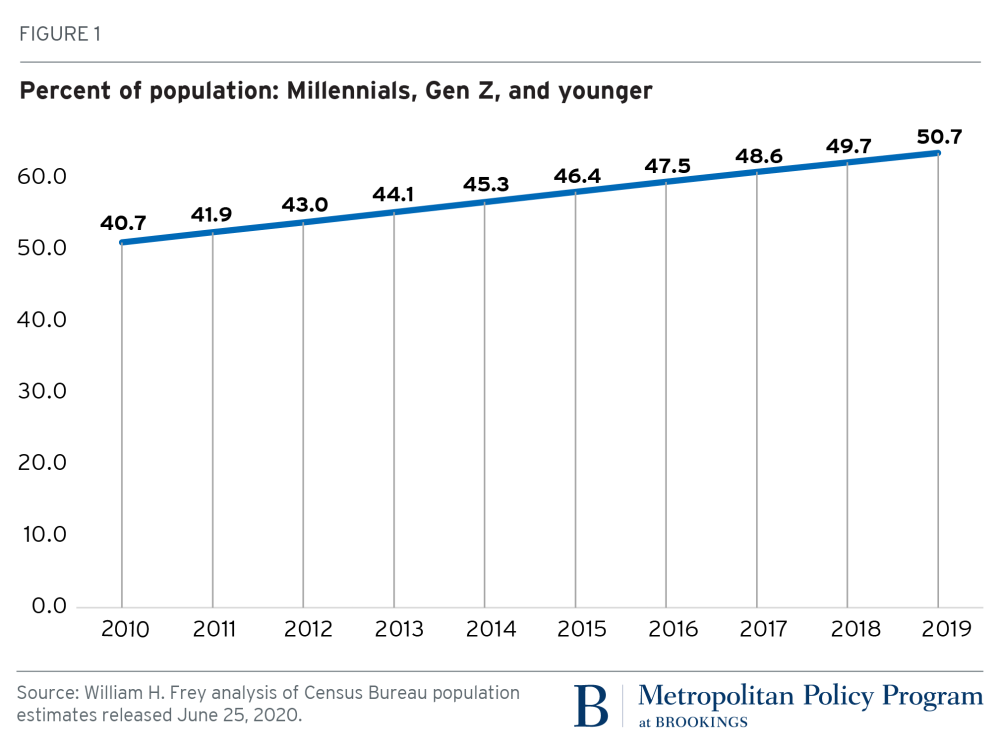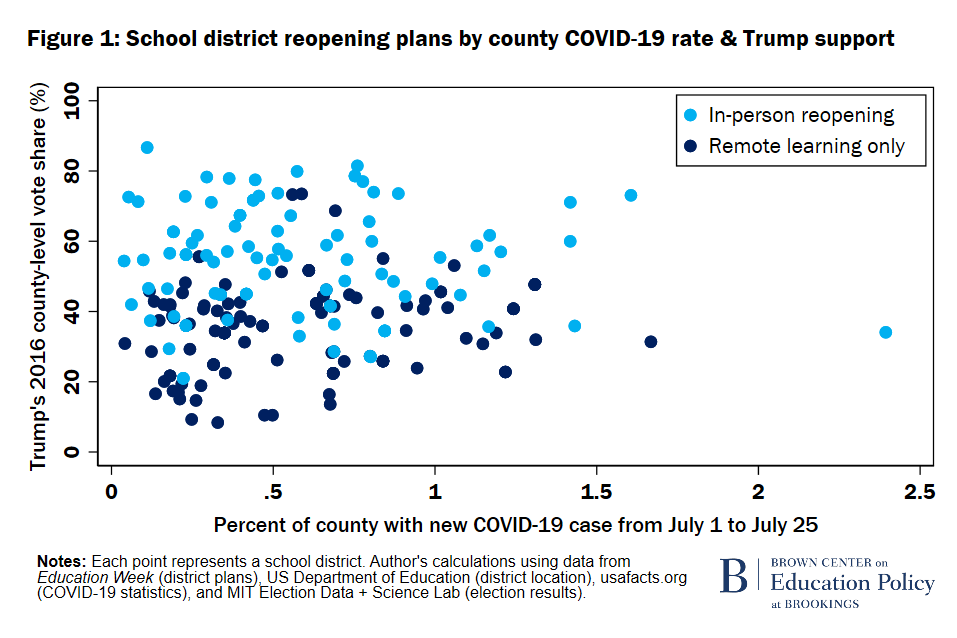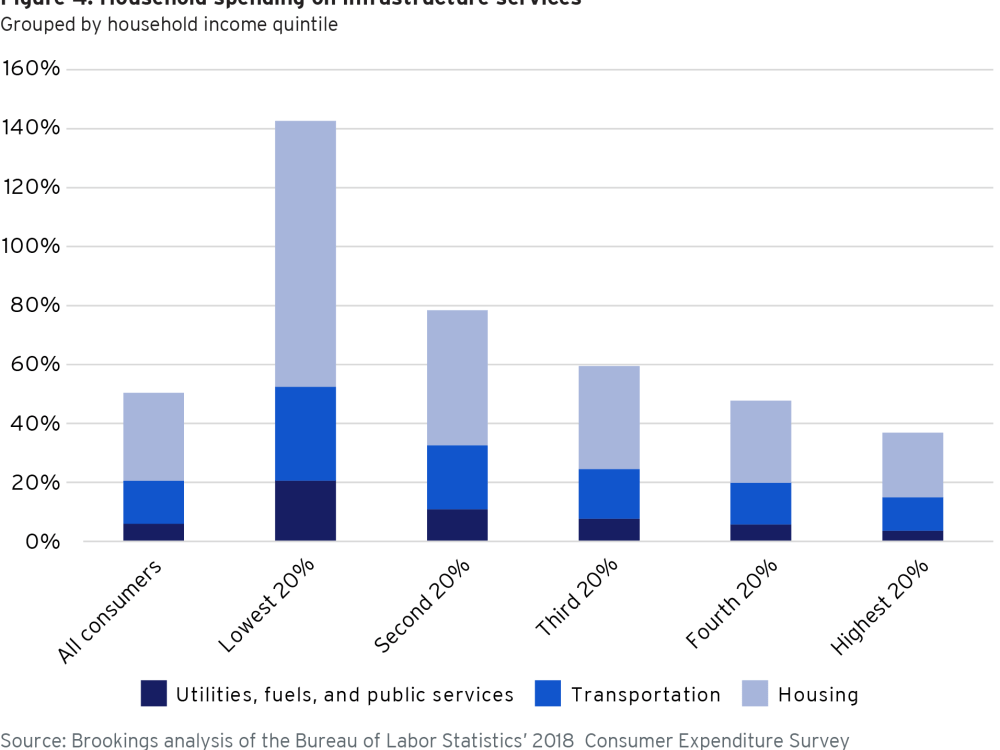In this edition of Charts of the Week, we look at the changing American age demographics (and its potential political implications); the factors driving decisions to reopen schools; and a new infrastructure stimulus plan.
YOUNG PEOPLE ARE THE NEW MAJORITY

The millennial, Gen Z, and younger generations now make up the majority of Americans, at a combined 50.7% of the nation’s population. In his new analysis, William Frey writes that “Millennials and their juniors (Gen Z and younger) are more racially diverse than those that preceded them, with nearly half identifying as a racial or ethnic minority,” and with these changes come new fissures between them and older, and whiter, generations. Frey says that “Projections show that by 2030, millennials and their juniors will make up more than half [of] not just the population, but of all eligible voters. With America’s youth already leading the charge against systemic racism and economic injustice, we can hope that it won’t take another decade before vital change comes to the nation.”
POLITICS, NOT PUBLIC HEALTH, DRIVING SCHOOL REOPENING DECISIONS
 According to new research from Jon Valant, local political attitudes are determining school districts’ decisions to conduct in-person activities. “If public health considerations were driving districts’ decisions,” Valant observes of the chart above, “we might expect to see the light blue dots to the left and the dark blue dots to the right. This would mean that districts with relatively high COVID-19 rates per capita are the ones opting for distance learning.” That’s not what’s happening. “In reality,” he continues, “there is no relationship—visually or statistically—between school districts’ reopening decisions and their county’s new COVID-19 cases per capita. In contrast, there is a strong relationship—visually and statistically—between districts’ reopening decisions and the county-level support for Trump in the 2016 election.”
According to new research from Jon Valant, local political attitudes are determining school districts’ decisions to conduct in-person activities. “If public health considerations were driving districts’ decisions,” Valant observes of the chart above, “we might expect to see the light blue dots to the left and the dark blue dots to the right. This would mean that districts with relatively high COVID-19 rates per capita are the ones opting for distance learning.” That’s not what’s happening. “In reality,” he continues, “there is no relationship—visually or statistically—between school districts’ reopening decisions and their county’s new COVID-19 cases per capita. In contrast, there is a strong relationship—visually and statistically—between districts’ reopening decisions and the county-level support for Trump in the 2016 election.”
AN INFRASTRUCTURE PLAN FOR ECONOMIC RECOVERY

Adie Tomer, Joseph Kane, and Lara Fishbane propose an infrastructure stimulus plan “to improve infrastructure and expand economic opportunity,” especially needed as the coronavirus pandemic pushes the economy into recession. The authors note that “infrastructure is essential to everyday life, but it’s not always affordable to use. As economists point out, infrastructure services such as water and electricity are necessities, and consumers are less sensitive to changes in their price. Infrastructure also tends to be more expensive for lower-income households than their higher-earning ones, with the lowest quintile of household earners spending over 50% of their post-tax income on transportation and other utilities.” Their plan draws from historical lessons and offers a way forward that “will ensure a stronger economic recovery in the short term and an innovative, more equitable infrastructure system to boost American competitiveness for decades to come.”
The Brookings Institution is committed to quality, independence, and impact.
We are supported by a diverse array of funders. In line with our values and policies, each Brookings publication represents the sole views of its author(s).


Commentary
Charts of the Week: New American majority, politics and reopening schools, an infrastructure plan
July 31, 2020